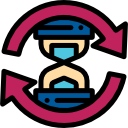
Midlife Career Change Success Stories: Reinvent with Courage, Craft, and Community
Chosen theme: Midlife Career Change Success Stories. Step into a home of reinvention where real people in their 40s, 50s, and beyond trade stale roles for meaningful work. We share practical wisdom, heart-lifting narratives, and the tiny daily habits that make big pivots possible. Read, reflect, and join the conversation—your next chapter deserves a standing ovation.
A data-backed shift
Longer working lives and evolving industries mean second or third careers are becoming normal, not rare. Our success stories demystify the journey through honest timelines, realistic detours, and concrete decisions you can adapt to your life right now.
Inspiration that teaches
We highlight emotional turning points, but we also document practical moves—skills inventories, bridge projects, learning plans, and networking scripts—so that inspiration is paired with repeatable steps you can start this week without burning everything down.
Your voice belongs here
Midlife wisdom is earned, not granted. Add your questions and experiences below so others can learn from you. Subscribe to get thoughtful prompts that help you translate lived experience into market value and a compelling pivot narrative.
From Accountant to UX Designer at 47

The tipping point
After years of ‘good at, not alive in,’ Sofia took a weekend design sprint. Sketching user flows felt like breathing fresh air. She didn’t quit; she committed to a quiet, consistent test: one hour nightly for ninety days to see if the spark sustained.

Small bets, big momentum
She redesigned a nonprofit’s donation form, then rebuilt her dentist’s intake flow, trading work for testimonials. Each tiny project sharpened skills and produced artifacts. She posted learnings weekly, inviting feedback that turned into mentors and, eventually, paid freelance opportunities.

First offer, new identity
A hiring manager noticed her case study series and loved her financial fluency. She landed a role designing dashboards for an analytics product, blending past expertise with new craft. Share your discipline mashup in the comments—what edge from your history powers your pivot?
The Psychology of Reinvention After 40
The most durable pivots connect old pride to new purpose. Instead of erasing your past, build a bridge: ‘I translate complex finances into simple interfaces.’ Language like this reduces fear, clarifies value, and helps others advocate for your next opportunity.


The Psychology of Reinvention After 40
Confidence grows from kept promises. Choose micro-commitments—twenty minutes of study, one outreach message, one shipped draft—to create evidence you can trust yourself. Celebrate small wins publicly to normalize progress and invite allies into your journey.

Map your transferable strengths
List moments you solved messy problems, persuaded skeptical stakeholders, or shipped under pressure. Convert each into skills employers recognize—facilitation, risk management, stakeholder alignment—and anchor them with brief, quantified outcomes that make your value immediately legible.
Reframe your past roles
Job titles can trap you. Rewrite bullets in the language of the destination field. Replace internal jargon with outcomes and verbs your target teams use, so recruiters see immediate relevance, not a biography they must decode under time pressure.
Portfolio storytelling
Create one-page case briefs that connect context, constraints, choices, and results. Add reflection on what you’d do differently now. This signals growth mindset and helps interviewers imagine you solving their problems, not merely recounting yesterday’s achievements.
Runway planning without panic
Estimate monthly essentials, then model a conservative timeline for your pivot. Build a cushion through temporary consulting, part-time shifts, or targeted savings. Clear numbers reduce anxiety and frame smart experiments that protect both momentum and morale.
Negotiating support at home
Treat your pivot like a household project. Share the plan, trade responsibilities during intensive periods, and set check-in dates. Involve teenagers or partners in celebrating milestones, turning your reinvention into a shared family achievement instead of a solitary burden.
Microtime learning
Progress thrives in small containers. Use commutes, lunch breaks, or evening sprints for focused practice. Maintain a visible habit tracker and a ‘next tiny task’ list so you move forward even on chaotic days when motivation runs low.

Learning Paths That Worked
01
Credential when it counts
In regulated fields or credibility-sensitive roles, a recognized certificate or short postgraduate program can open doors. Seek curricula with applied projects, employer partnerships, and alumni networks that actively introduce graduates to hiring managers.
02
Project-led learning
Many found traction through projects first, credentials later. Build something real—an analysis, prototype, campaign, or new process—then document it publicly. Demonstrating outcomes often shortens the distance between ‘learning’ and ‘paid to do the thing’ in meaningful ways.
03
Mentors over manuals
A single mentor can compress months of confusion into one clear afternoon. Ask for specific feedback on artifacts, not generic advice. Offer value back—research help, documentation, or introductions—to turn one conversation into an enduring relationship.

